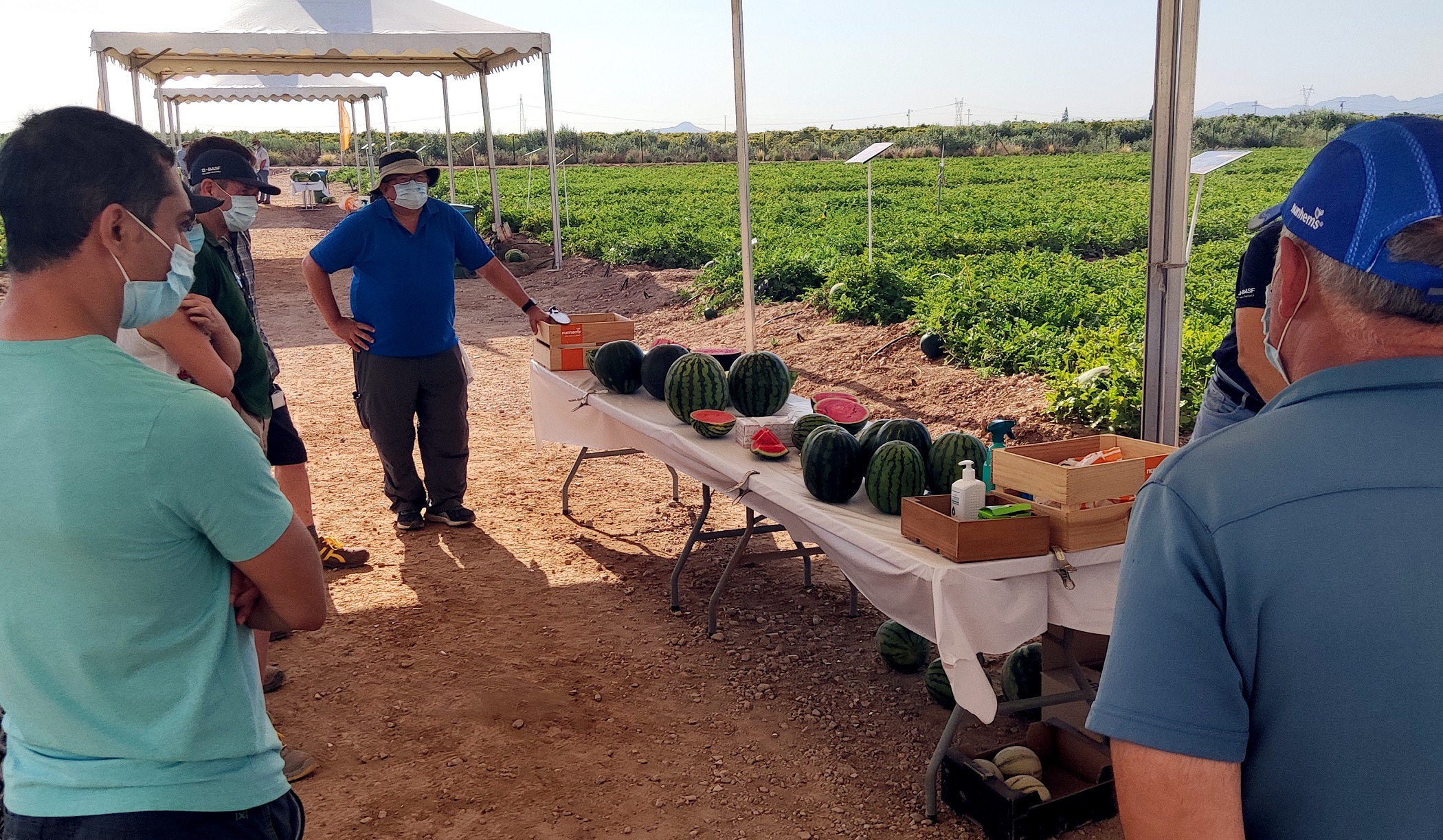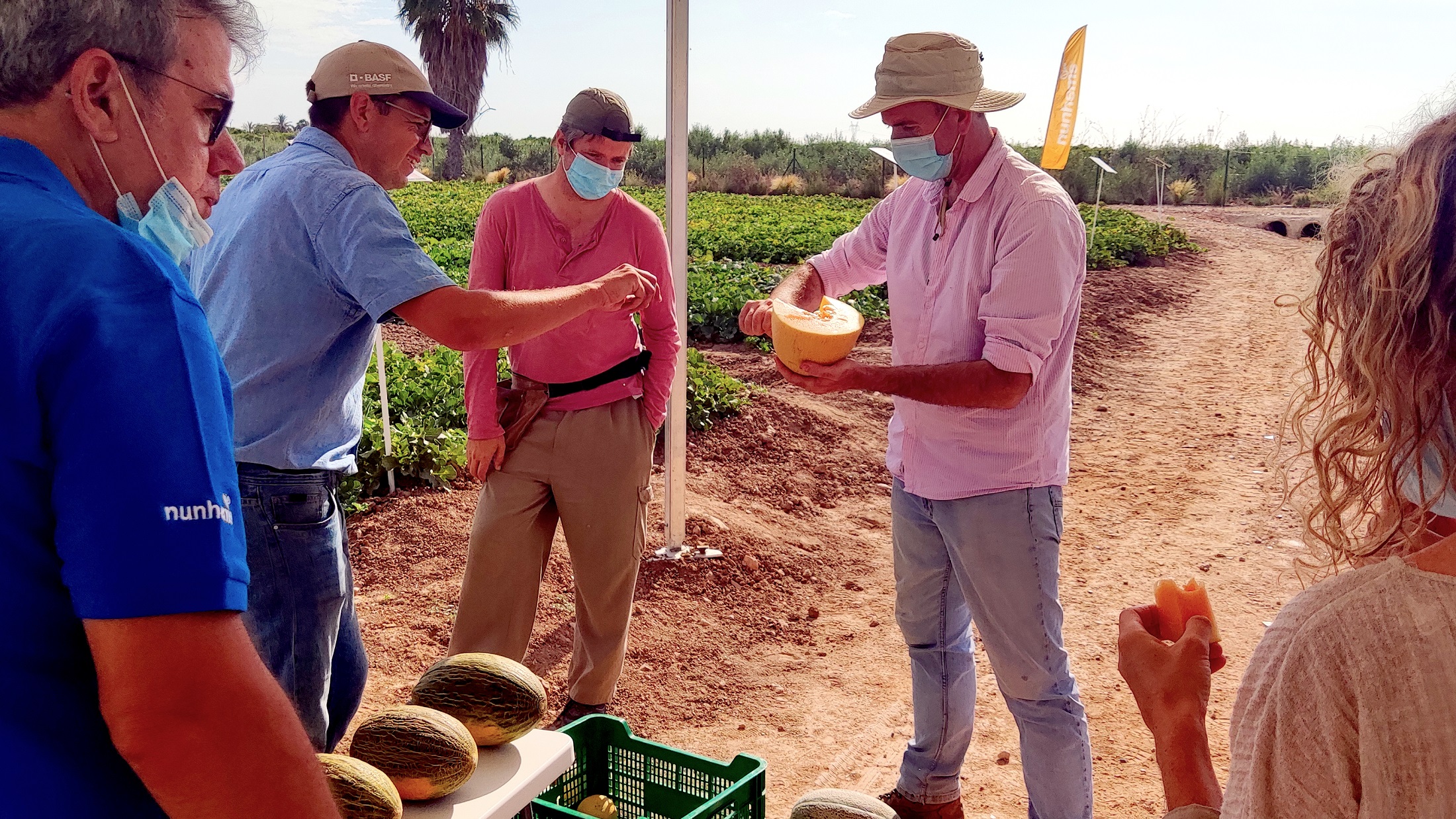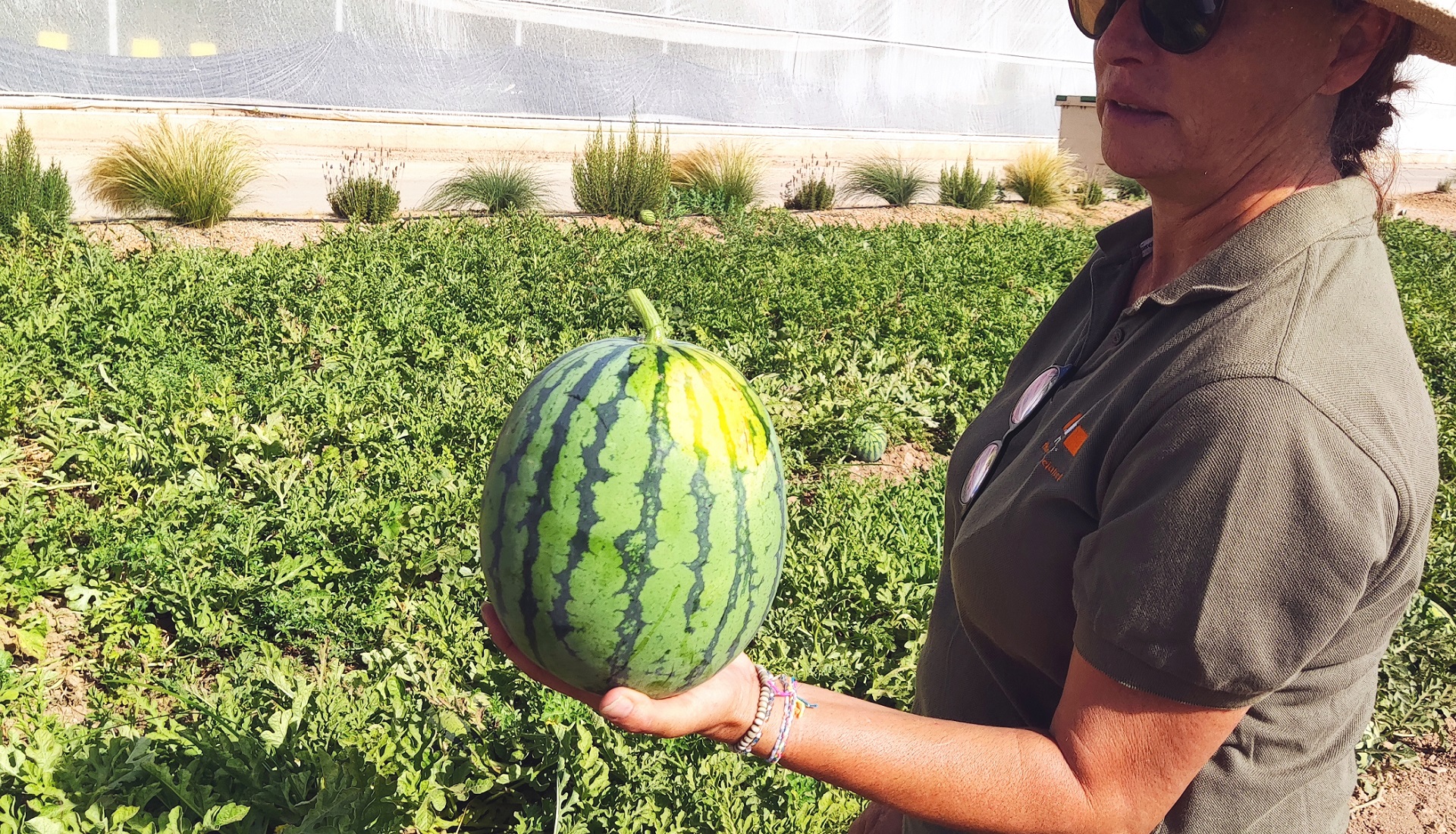The Region of Murcia: the nerve centre of melon and watermelon innovation in Europe
This week and next, the Region of Murcia becomes Europe’s epicentre of agronomic and genetic innovation of melon and watermelon. Coinciding with the start of the Murcia campaign, the different international seed firms open the doors of their experimental stations and present their new products to European producers and buyers of these summer crops.
As Fernando P. Gómez, director of the Association of Producers-Exporters of Fruits and Vegetables of the Region of Murcia (PROEXPORT), points out, “The choice of seeds is very important in order to obtain healthy plants and quality fruits. Farmers, businessmen and professionals seek developments that provide new flavours, colours, shapes, textures, resistance to pests, optimisation of supplies or adaptation to climate change. It is an arduous work, of years, that requires close collaboration between the seed companies and the producers at origin, something that we do with special success in the Region of Murcia.”
The Region of Murcia leads Spain’s melon production, with 55% of the total, while it accounts for 20% of watermelon production, just behind Andalusia. In 2021, Murcia exported 208,680 tons of melon worth €154 million. As for watermelon, exports amounted to 240,530 tons, worth €99.6 million.
Farmers from all the Spanish producing areas, from other countries and many specialists from European distribution chains travel to the Region to learn first-hand about the innovative proposals developed by the “breeders”, plant breeders who create new varieties in the firms of seeds.
Satisfying the tastes of the current consumer, the demands of the distribution and the processing industry, and the needs of farmers to bet on one variety or another are the factors with which the “breeders” play when generating a new variety of melon or watermelon.
In these innovations, which respond to both consumer trends and production needs, Murcian fruit and vegetable producers demand variables such as resistance to certain pests and diseases, the sustainability of field cultivation, its adaptation to the production area, or the productivity of the plant in kilos per hectare.
At points of sale, the key is to obtain fruit that lasts on the shelf without deteriorating and that has a uniform appearance and, in recent years, smaller sizes that adapt to the size of the current family sizes. However, these needs depend on the market for which the product is intended. While the north of Europe demands small sizes, countries like Portugal prefer large-sized fruits.
To show off their novelties, the different seed houses have organised their open house calendar throughout this week and until July 12. In the Region of Murcia, these are the main dates of the melon and watermelon events:
| DATE | FIRM | EVENT |
| 29 June to 8 July | Bayer – Seminis | Melon & Watermelon Week ’22 |
| 27 June to 8 July | Enza Zaden | Melon House Fair 2022 |
| 4 to 8 July | Nunhems – BASF | Melon & Watermelon Business Event for Experts |
| 4 to 12 July | Rijk Zwaan | Global Melon & Watermelon Event |
| 6 and 7 July | Semillas Fitó | Fitó Week |
| 6 to 8 July | Syngenta | Melon & Watermelon Demo Days |






